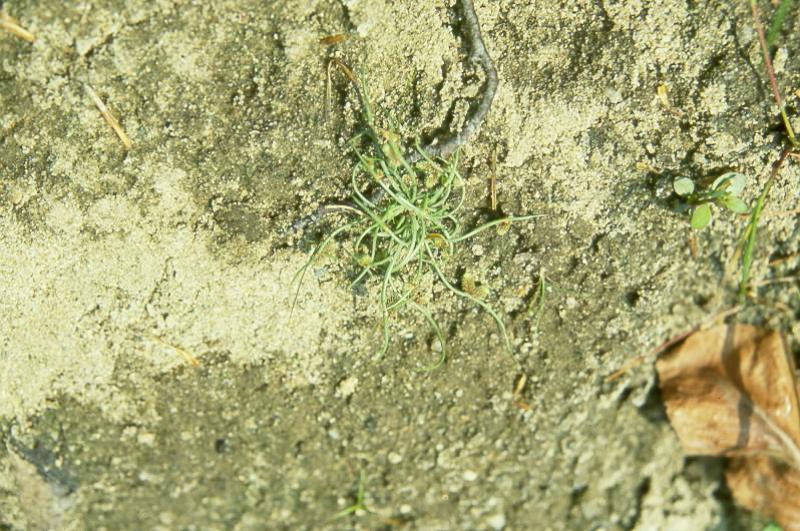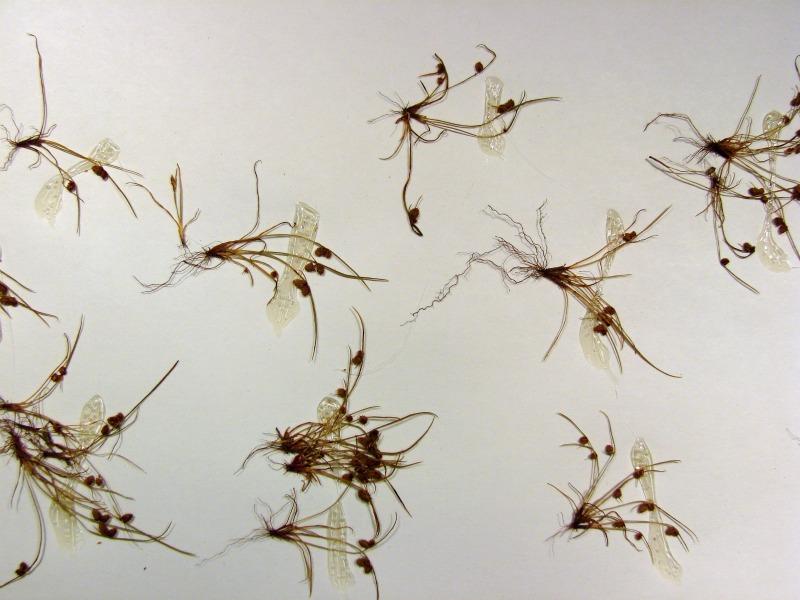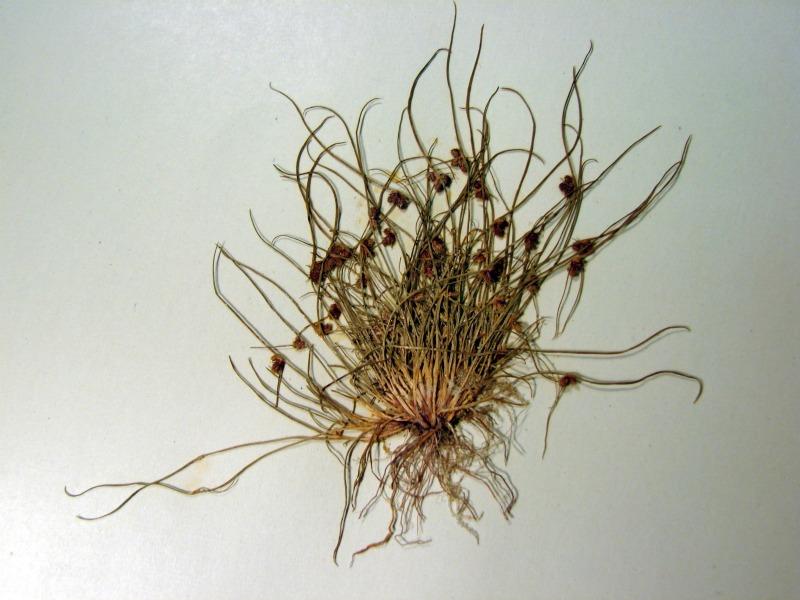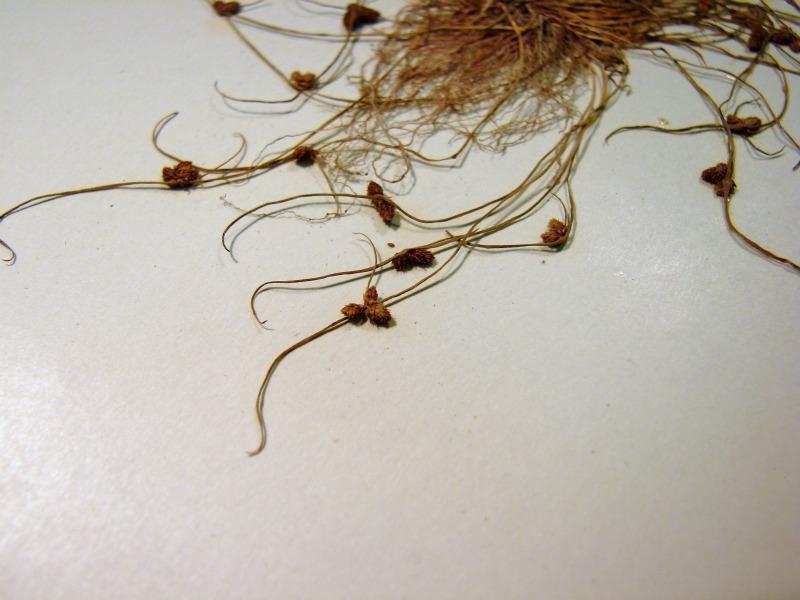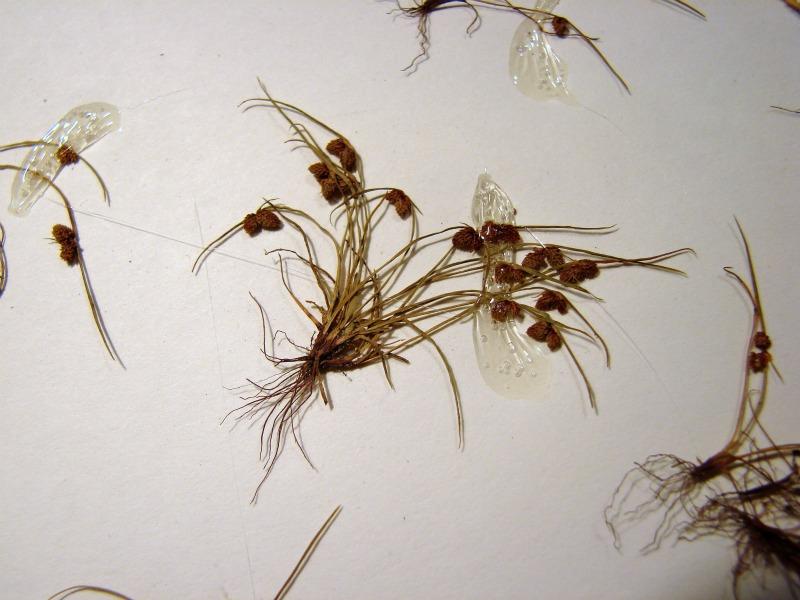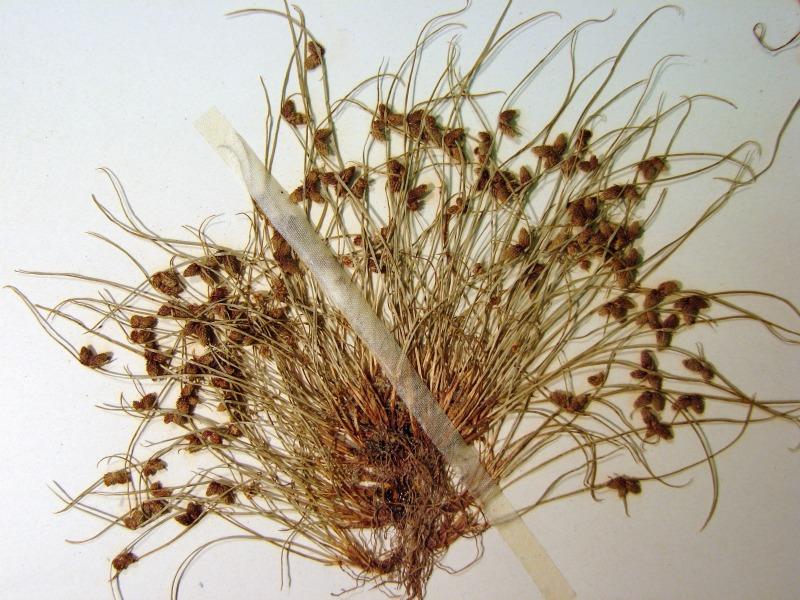Small-flowered Dwarf Bulrush
Cyperus subsquarrosus (Muhl.) Bauters
- Class
- Monocotyledoneae (Monocots)
- Family
- Cyperaceae (Sedge Family)
- State Protection
- Endangered
Listed as Endangered by New York State: in imminent danger of extirpation in New York. For animals, taking, importation, transportation, or possession is prohibited, except under license or permit. For plants, removal or damage without the consent of the landowner is prohibited.
- Federal Protection
- Not Listed
- State Conservation Status Rank
- S1
Critically Imperiled in New York - Especially vulnerable to disappearing from New York due to extreme rarity or other factors; typically 5 or fewer populations or locations in New York, very few individuals, very restricted range, very few remaining acres (or miles of stream), and/or very steep declines.
- Global Conservation Status Rank
- G5
Secure globally - Common in the world; widespread and abundant (but may be rare in some parts of its range).
Summary
Did you know?
The genus name comes from the Greek lipos, meaning fat, and carphos, meaning chaff. It refers to the thickness of the inner scales of some of the species. Micrantha means tiny-flowered (Fernald 1949). This plant may often be overlooked because it is so small.
State Ranking Justification
There are 7 existing populations but only two of them are in good condition. The others are small populations around highly impacted ponds. One small population may no longer exist. There are 11 historical populations but most of these have not been searched in detail.
Short-term Trends
Existing populations have seen little change over the last 20 years. They continue to survive at low levels despite human disturbance and invasion by exotic species. One population may be extirpated but more survey work is needed to confirm this.
Long-term Trends
This plant was never common in New York. New discoveries since 1985 have offset the loss of historical populations from Long Island and the shores of Oneida Lake but no excellent quality occurrences exist.
Conservation and Management
Threats
The pond shorelines are often subject to trampling or ATV use. Copper sulfate was used in one pond where this plant occurs and phragmites was threatening another population.
Conservation Strategies and Management Practices
The shoreline habitat of this species should be protected from direct human disturbance such as excessive trampling or soil disturbance and compaction from ATVs. The hydrology and water quality around the occurrences should be preserved and aquatic invasive species should be kept out or removed.
Research Needs
Research is needed to discover this plant's ability to seed bank at its existing locations and how these seed banks can best be protected.
Habitat
Habitat
In New York Dwarf Bulrush has been found growing on moist sandy substrates at the edges of ponds and riverbanks, including artificial ponds (New York Natural Heritage Program 2007). Sandy borders of ponds and streams (Fernald 1970). Moist sandy soil (Gleason 1952).
Associated Ecological Communities
- Coastal plain pond shore
(guide)
The gently sloping shore of a coastal plain pond with seasonally and annually fluctuating water levels. Plants growing on the pond shore vary with water levels. In dry years when water levels are low there is often a dense growth of annual sedges, grasses, and herbs. Submerged and floating-leaved aquatic plants, such as fragrant waterlily and pondweeds, may become "stranded" on the exposed shore. In wet years when the water level is high only a few emergents and floating-leaved aquatics may be noticeable. T
- Farm pond/artificial pond
The aquatic community of a small pond constructed on agricultural or residential property. These ponds are often eutrophic, and may be stocked with panfish such as bluegill and yellow perch.
- Inland non-calcareous lake shore
The gravelly, sandy or muddy shore of an inland lake or pond with seasonally fluctuating water levels where the water is not calcareous. There may be few plants and those that are present are usually herbaceous.
- Riverside sand/gravel bar
(guide)
A meadow community that occurs on sand and gravel bars deposited within, or adjacent to, a river channel. The community may be very sparsely vegetated, depending on the rates of deposition and erosion of the sand or gravel.
Associated Species
- Coreopsis rosea (pink coreopsis, pink tickseed)
- Cyperus dentatus (toothed flat sedge)
- Eleocharis melanocarpa (black-fruited spike-rush)
- Eleocharis obtusa
- Fimbristylis autumnalis (autumn fimbry)
- Gratiola aurea (golden hedge-hyssop)
- hedyotis uniflora
- Hypericum canadense (lesser Canadian St. John's-wort)
- Lobelia cardinalis (cardinal flower)
- Onoclea sensibilis (sensitive fern)
Range
New York State Distribution
In New York this species has been collected from Long Island, the Hudson Valley as far north as Warren County, and Lake Oneida in the central part of the state.
Global Distribution
Dwarf Bulrush is known from all of the northeastern and midwestern states (and adjacent Quebec and Ontario), ranging south to North Carolina, and apparently disjunct to Florida and Alabama (as well as Mexico, the Caribbean, and Central America). It ranges west to the central plains states, Texas, New Mexico, Arizona, and the west coast north to British Columbia.
Identification Comments
General Description
Dwarf bulrush is a tiny, annual member of the sedge family, with clumped, arching stems and basal leaves just 2-20 cm tall and .3 to .5 mm wide. The inflorescence consists of 1-2 (sometimes 3) spikes, subtended by leaflike bracts 2-5 cm long. Each spike bears flowers with a single anther and 2 styles. The fruits are brown, egg-shaped, and .3 to .6 mm wide. Distinguishing characteristics: dwarf, arching stems and tufted habit. The 1-3 short, brown, cylindric, sessile, pistillate spikelets have a short recurved point. Achenes cylindric, brown, slightly reticulated, with many close rows of crowded low papillae. Best life stage for ID is in fruit. Characteristics needed to ID: mature inflorescence.
Best Life Stage for Proper Identification
This species is best identified by the mature fruit.
Similar Species
Lipocarpha micrantha is the only member of its genus in New York. The flowers resemble those of Scirpus, except that there is a minute translucent scale (readily overlooked) between the flower and the axis of the spikelet.
Best Time to See
This sedge species flowers in mid-July and the fruits develop in August and September.
- Fruiting
The time of year you would expect to find Small-flowered Dwarf Bulrush fruiting in New York.
Small-flowered Dwarf Bulrush Images
Taxonomy
Small-flowered Dwarf Bulrush
Cyperus subsquarrosus (Muhl.) Bauters
- Kingdom Plantae
- Phylum Anthophyta
- Class Monocotyledoneae
(Monocots)
- Order Cyperales
- Family Cyperaceae (Sedge Family)
- Order Cyperales
- Class Monocotyledoneae
(Monocots)
- Phylum Anthophyta
Additional Common Names
- Dwarf Bulrush
- Rush
- Sedge
Synonyms
- Hemicarpha micrantha (Vahl) Pax
- Lipocarpha micrantha (Vahl) G. Tucker
Additional Resources
Best Identification Reference
Flora of North America Editorial Committee. 2002. Flora of North America, North of Mexico. Volume 23. Magnoliophyta: Commelinidae (in part): Cyperaceae. Oxford University Press, New York. 608 pp.
Other References
Crow, Garrett E. and C. Barre Hellquist. 2000. Aquatic and wetland plants of northeastern North America: A revised and enlarged edition or Norman C. Fassett's a manual of aquatic plants. Volume two angiosperms: Monocotyledons. The University of Wisconsin Press. Madison, Wisconsin. 456 pp.
Fernald, M.L. 1950. Gray's manual of botany. 8th edition. D. Van Nostrand, New York. 1632 pp.
Gleason, Henry A. and A. Cronquist. 1991. Manual of Vascular Plants of Northeastern United States and Adjacent Canada. The New York Botanical Garden, Bronx, New York. 910 pp.
Haines, Arthur and Thomas F. Vining. 1998. Flora of Maine. A Manual for Identification of Native and Naturalized Vascular Plants of Maine.
Holmgren, Noel. 1998. The Illustrated Companion to Gleason and Cronquist's Manual. Illustrations of the Vascular Plants of Northeastern United States and Adjacent Canada. The New York Botanical Garden, Bronx, New York.
New York Natural Heritage Program. 2010. Biotics database. New York Natural Heritage Program. New York State Department of Environmental Conservation. Albany, NY.
New York Natural Heritage Program. 2024. New York Natural Heritage Program Databases. Albany, NY.
Rhoads, Ann F. and Timothy A. Block. 2000. The Plants of Pennsylvania, an Illustrated Manual. University of Pennsylvania Press, Philadelphia, PA.
Voss, E.G. 1972. Michigan Flora, Part I. Gymnosperms and Monocots. Cranbrook Institute of Science Bulletin 55 and the University of Michigan Herbarium. Ann Arbor. 488 pp.
Weldy, T. and D. Werier. 2010. New York flora atlas. [S.M. Landry, K.N. Campbell, and L.D. Mabe (original application development), Florida Center for Community Design and Research http://www.fccdr.usf.edu/. University of South Florida http://www.usf.edu/]. New York Flora Association http://newyork.plantatlas.usf.edu/, Albany, New York
Weldy, Troy W. and David Werier. 2005. New York Flora Atlas. [S.M. Landry, K.N. Campbell, and L.D. Mabe (original application development), Florida Center for Community Design and Research. University of South Florida]. New York Flora Association, Albany, NY. Available on the web at (http://newyork.plantatlas.usf.edu/).
Links
About This Guide
Information for this guide was last updated on: January 18, 2008
Please cite this page as:
New York Natural Heritage Program. 2024.
Online Conservation Guide for
Cyperus subsquarrosus.
Available from: https://guides.nynhp.org/dwarf-bulrush/.
Accessed July 26, 2024.
